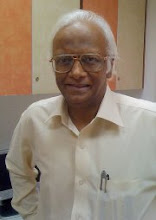What makes a good syllabus? One that empowers the student to face the future confidently or one that weighs heavily on the student with the burden of the past? Our syllabus from school to college cramps creativity – the very intellectual vitality of the student whom it is supposed to envision.
A highly reputed Dean of Columbia Journalism School tried to introduce a new curriculum, tailor-made for a knowledge-based society. But such was the vehement protest by the students, faculty and alumni that he was forced to make a hasty retreat! The Dean waited for his moment and did introduce his pet curriculum as a separate stream. But this stream MA in Journalism failed to capture the imagination of the students at
When Times School of Journalism was founded in 1985, it followed the Columbian vision of craft over theory, and produced Journalists some of whom turned out to be illustrious, like Raju Narisetti, Samar Halarnkar, Senthil Chengalvarayan, Manoj Mitta. TSJ, as it is now popularly called, is the progeny of The Times Training Scheme, housed in
Pathanjali was a gifted actor and dressed himself (of course, ably assisted by his students) as a leper, sat in front of The Times of India office across Victoria Terminus (now Chitrapati Terminus), and earned Rs 95 and some paisa in an hour, and promptly appeared on the next day’s paper as anchor. The training scheme had no structured plan but its success lay in selecting 10 inquisitive minds who will rotate after a six-months’ grooming in all the departments of the editorial conglomerate. The department heads kept a lynx-eye to facilitate the selection process. The students sign a bond so that they don’t run away during or after training.
Sheshagiri Rao, Chief Reporter of TOI, was fond of playing pranks. He sent five of the interns one after the other to the Western Railway General Manager’s cabin to report a minor short circuit, which was noticed and the fire brought under control in just five minutes. Panic gripped the top brass when the fifth intern entered the GM’s cabin. He rang up Editor Sham Lal and pleaded for help. Sham Lal summoned Pathanjali, who in turn directed the Editor to Sheshagiri. Finally, the whole of The Times of India exploded into laughter when the Chief Reporter in his characteristic tongue-in-cheek style narrated the story!
Some people outside have an exaggerated notion of the accuracy of Times reporting. Once the captain of the winning team rang up the Sports Editor and complained: `Sir, we are the winning team. Your paper has reported we have lost the match’. Pat came the Sports Editor’s reply: `If The Times has said, you have lost, you have lost!’
Prof Thomas Oommen launched Times School of Journalism, under the name TRF (Times Research Foundation) Institute for Social Sciences, Research and Education in 1985. Initially, the classes were held at Punjab National Bank, Patel Chowk, New Delhi, which was later shifted to 10 Darya Ganj (popularly called 10 Downing Street since the word Darya Ganj sounds so jarring). The school ran for eight years and went into hibernation. Two years later Bidyut Sarkar started the school again and ran for two years (1993-1995). Divya Rana (1996-1998) gave it a shot after two years of hibernation. And finally, it was re-re-re-launched 2004 and came to its present form sending out seven batches of students and the next batch all set to go.
Then came the verdict, silencing the cynics and critics. An award in recognition of its excellence in syllabus! Credit must go to Gautam Adhikari, the globe-trotting Dean of the school, and Umesh Chandrashekhar, the Principal to whom nothing is impossible. Of course, the faculty, too, would like to have a finger in the pie.
Empires have risen and fallen, civilizations have flourished and decayed, institutions have come up and gone down the memory lane. Can we alter
© SUNNY THOMAS 2011


